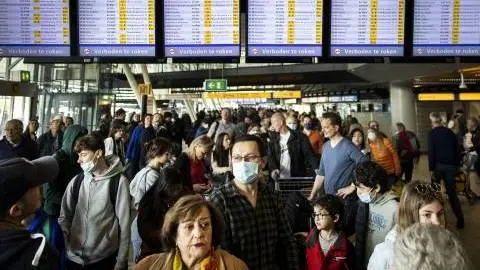3 calls for China as its economic recovery slowly begins
With the Chinese economy starting to recover with the easing of strict Covid-19 measures, the government is looking to boost infrastructure investment to achieve its 5.5% GDP growth target for 2022
The Chinese economy starts to recover
The duration of quarantine in China has been shortened, and the frequency of Covid-19 testing now depends on the risk level assessed for each location. As a result, fixed frequency Covid testing has been replaced by a more flexible arrangement. These new arrangements provide room for retail sales growth during the school holidays. We expect that there will be more cross-city and cross-province leisure trips.
Factories will benefit less than retail sales as 70% of factories were in operation even during the lockdowns as they could operate in closed-loop environments. So, the marginal gain from easing Covid measures for manufacturers should be smaller. Port operations are normalising; they are less congested and freight rates should fall from here. This should reduce delivery times and logistic costs for trade.
Consequently, we do not expect the People's Bank of China to cut policy rates further. The yuan could face appreciation pressure in the short term.
Infrastructure investment is needed if the government wants to achieve its growth target
The government has reiterated that it can achieve the 5.5% GDP target set for this year. This will be challenging even though the economy has started to recover. We believe the government will try to boost infrastructure investment to achieve its target, which will then turn into construction activity and create more jobs. But the government needs to act fast otherwise construction activity will start too late to support economic growth for this year.
Within infrastructure, we should see both traditional infrastructure projects, such as transportation networks, as well as new infrastructure, for instance, completing 5G coverage, and building green energy.
There are also other fiscal stimuli. Some cities have provided subsidies for households to upgrade their cars to electric vehicles and other consumer electronic products. This not only supports consumption but also creates jobs if business sales recover. The main idea of fiscal stimulus is to help sales of the private sector so that it can create more jobs and will then increase consumption, and therefore sales, to form a virtuous cycle.
Future Covid outbreaks cannot be ruled out
The market has been buoyed by the positive news that China has started to recover after the long lockdowns. But the risk of future lockdowns still exists. If China experiences a jump in Covid cases in key cities, like Beijing, Shanghai or Shenzhen, lockdowns would still be likely. And even though lockdowns in the future should be shorter, they would still hurt economic growth. Under such situations, monetary policy could be eased again.
This publication has been prepared by ING solely for information purposes irrespective of a particular user's means, financial situation or investment objectives. The information does not constitute investment recommendation, and nor is it investment, legal or tax advice or an offer or solicitation to purchase or sell any financial instrument. Read more
Download
Download article
7 July 2022
ING Monthly: Europe’s recovery is cancelled This bundle contains 14 Articles